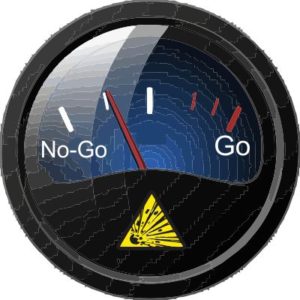Getting Started Doing a Dust Hazard Analysis (DHA)
Completing a DHA is often a confusing and daunting task. We will outline the process step by step of completing a Dust Hazard Analysis as required by NFPA 652 and OSHA.
Do You Have Combustible Dust?
The easiest way to determine if your dust is combustible is to do a Go/No-Go Test by collecting a sample of your dust and sending it to us for testing. You can get more information on a Go/No-Go Test Here.
Completing a Dust Hazard Analysis
If after you complete the Go/No-Go Test it is determined that you have combustible dust in your facility, you must complete a dust hazard analysis by Sept. 7,2020
Collect Documentation
Begin by collecting any available relevant drawings and documents that define your processes, equipment, operating parameters and existing hazards. This includes:
- Process Flow Drawings
- Piping and Instrumentation Drawings
- Mass & Energy Balance
- General Arrangement Drawings
- Building Plans
- Equipment Manufacturer Specifications
- Electrical Hazard Classification Drawings
Creating Documentation
When the above documentation is not currently available, creation of the documentation is necessary. This can be done by investigation within the facility, its processes & equipment, and interviewing facility staff to complete the necessary documentation.
Understanding Material Property Changes During Processing
In addition to collecting the above documentation an understanding of how the material properties change during the process, for instance an inert material may become combustible at some point during processing — this must be understood and documented. Testing of the material properties such as KSt, PMax, MIE, MEC, LIT, etc. may need to be performed and documented. For a more complete listing of series of material properties testing click here
NFPA & OSHA Specific Commodity Guidelines
NFPA 652 and OSHA provides guidance on the industry or commodity specific standards that may apply to your facility. Some additional standards may also be applicable like NFPA 68 Standard on Explosion Protection by Deflagration Venting or NFPA 69 Standard on Explosion Prevention Systems.

Verification of Document Accuracy
The older a facility is the more likely the documentation for processes and equipment is no longer accurate. Documentation should be checked against actual processes within the facility to verify accuracy. This can be viewed as an opportunity to update drawings and other documents to reflect the current state of affairs withing the plant.
Completed Documentation
The completed documentation will form the basis for the Dust Hazard Analysis.
Create a DHA Team
It is a good idea to form a dedicated team that will oversee the DHA. NFPA 652 recommends a team approach, headed by a qualified person, but does not require it.
Team Members
The team should be made up of a diverse cross-section of personnel, starting with the plant engineers and management representative, safety personnel, union representatives, operations and maintenance personnel all bring valuable information to the team.
External Consultants
An external consultant, familiar with the DHA process, can offer insight and smooth the process. A consultant with experience in different facilities across a variety of industries might identify hazards and propose solutions your internal team members don’t readily recognize. “Sometimes you can’t see the forest for the trees.”
Identify Hazards & Evaluate Compliance
This is the core of the DHA. There may be hazards that were previously unknown that a systematic review unveils.
Systematic Review
A painstaking review of each point along each process must be evaluated for ignition or explosion potential, that is:
- Presence of a fuel (dust)
- Dispersion of the fuel
- Presence of an ignition source
- Oxygen is usually present
- Confinement of the fuel
Basic Focus of the Review
If we assume that air (Oxygen) is present and your dust has combustible qualities, based on the Go/No-Go test above, the process at each step boils down to:
- Is there potentially enough dust to produce a combustible atmosphere?
- Is there potential for dust to be dispersed into a cloud?
- Is there potential ignition sources or heat source high enough to create ignition present?
Protection Measures Currently in Place
The systematic review should also identify and document any protective measures currently in place at the process point in question. These measures should be noted and evaluated for compliance with NFPA and OSHA regulations. If compliant, no additional action is necessary for the process point in question.
Prioritize Hazards by Likelihood & Potential Severity

Once hazards are identified and documented, your DHA team must prioritize the hazards in order of risk potential ranking in which to be addressed. The ranking generally compares the potential likelihood of an event verses the potential severity of an event and ranks accordingly.
Creating an Action Plan
Once the hazards have been prioritized a plan to address them needs to be created and implemented. Some risks need immediate attention while others can be scheduled for future attention. This becomes part of your DHA.
Diarize Action Plan
DHA Compliance
NFPA 652 requires that you record the results of the DHA, what was found, what has been addressed, when will other hazards be addressed and the progression of the Action Plan. These records can be shown to any Authority Having Jurisdiction (fire marshall, et al) to confirm your compliance with applicable regulations.
Reference for Future Upgrades
The DHA documents with diarized records of implementation can serve as a reference for facility management when modifications to the facility or the facility processes are being considered.
Rinse & Repeat
As Facility or Processes Change
Your DHA needs to be revisited and updated as your facility or processes undergo modifications. These modifications include:
- New Equipment
- New process materials
- Changes in process parameters
- New process being added to facility
Every 5 Years
To help ensure against complacency and the accumulative effects of unnoticed changes, NFPA 652 section 7.1.4 requires the DHA to be reviewed and updated at least every 5 years.
AST Group is Here to Help
The AST Group of Companies offers testing and consulting services to complete a Dust Hazard Analysis through AST Canada and AST Engineering.

